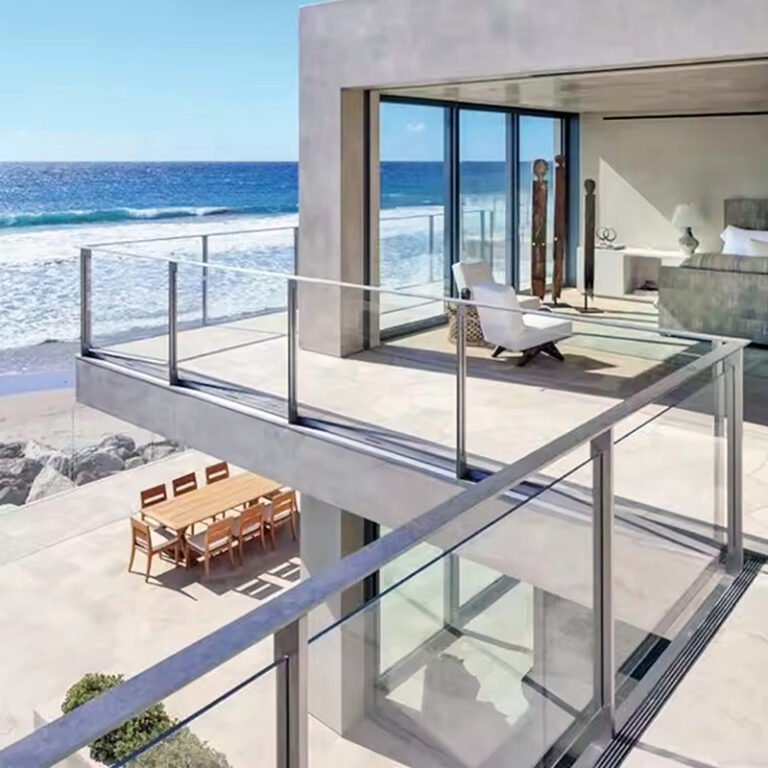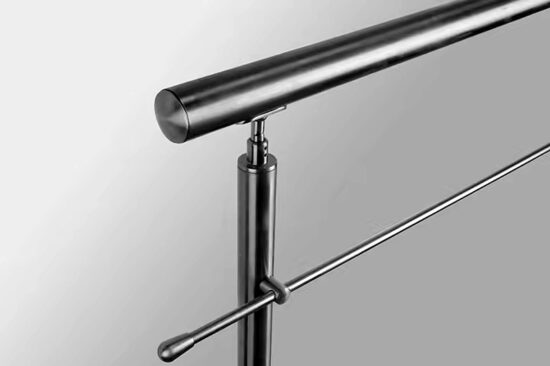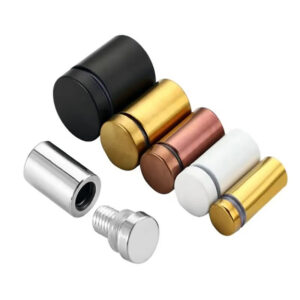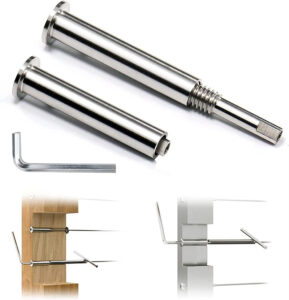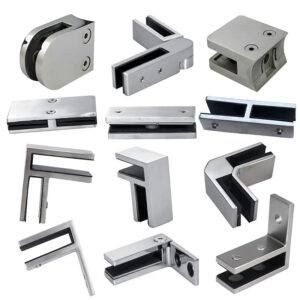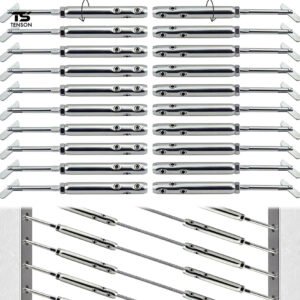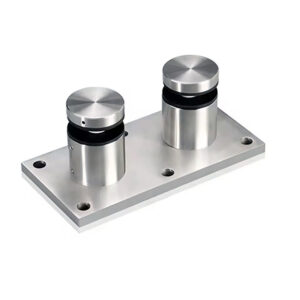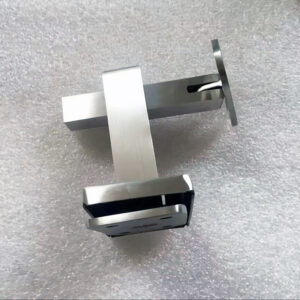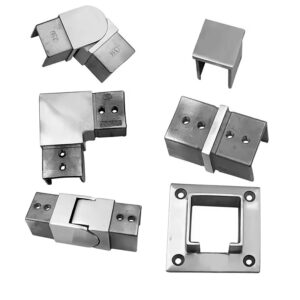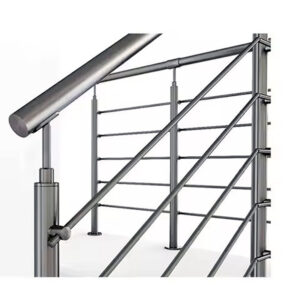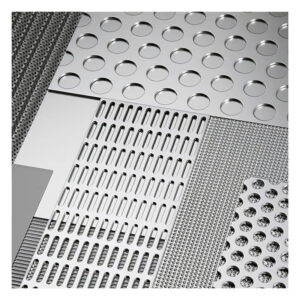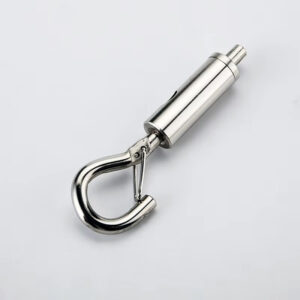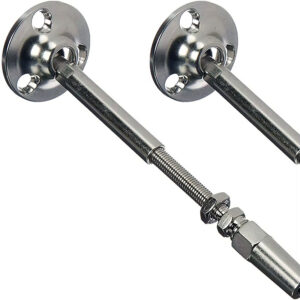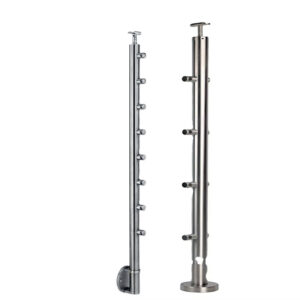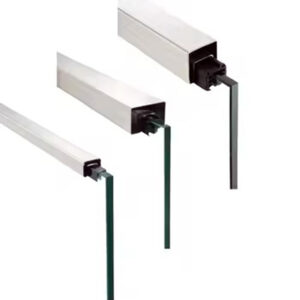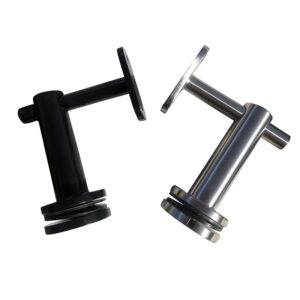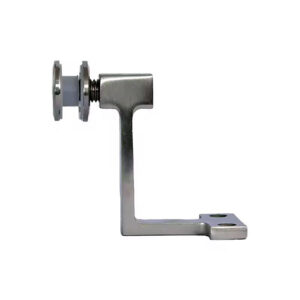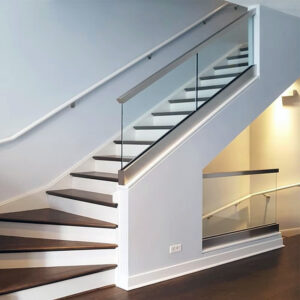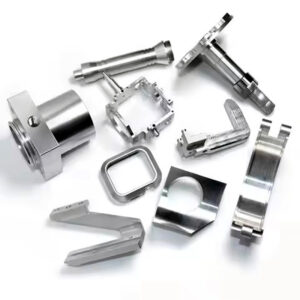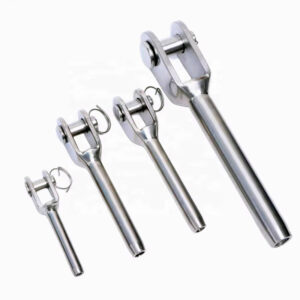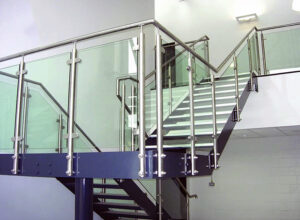Finding railing hardware that actually stands up to weather isn’t just about picking stainless steel and hoping for the best. After 23 years of manufacturing precision hardware, we’ve learned what separates systems that last from those that create expensive callbacks. Weather resistant systems need the right materials, proven connections, and design that accounts for thermal movement, moisture infiltration, and UV exposure. The difference between a successful installation and a maintenance nightmare often comes down to understanding which components work together under real conditions.
Core Weather Resistant Products & Performance
Marine Grade Stainless Systems
Our 316L stainless steel components deliver proven corrosion resistance in coastal and industrial environments. The weather resistant fabrication 316L process includes solution annealing and passivation treatments that create lasting surface protection. Unlike 304 stainless that shows pitting within 18-24 months in salt air, 316L maintains structural integrity and appearance for decades.
Handrail Systems: Wall-mounted continuous rails with expansion joints every 20 feet accommodate thermal movement without stress cracking. Post-mounted systems use welded connections sealed against moisture infiltration. Surface mount options include gasket seals and drainage channels that prevent water accumulation.
Glass Railing Hardware: Point-fixed glass systems with 316 stainless clamps and spigots maintain weather seals through thermal cycling. Base shoe designs include weep holes and compression gaskets. Standoff hardware features captured fasteners that won’t corrode or seize during maintenance.
Cable Railing Components: Marine grade weather systems ODM capabilities include custom tensioning hardware with corrosion-resistant coatings. Cable assemblies use 316 stainless wire rope with nylon-coated protection. Through-post fittings include O-ring seals and anti-seize threading.
Commercial Weather Resistant Railings
Standard commercial applications require different performance criteria than marine environments. 304 stainless components provide cost-effective durability for most urban and suburban installations. Our modular approach uses standardized connections that seal against moisture while allowing thermal expansion.
Mounting Hardware: Adjustable wall brackets accommodate building movement and settling. Base plates include integral drainage and flexible sealant compatibility. Post anchoring systems use galvanic isolation to prevent dissimilar metal corrosion.
| Material Grade | Salt Air Resistance | Urban Environment | Industrial Chemical | Cost Factor |
|---|---|---|---|---|
| 316L Stainless | 25+ years | 30+ years | 15-20 years | 1.4x |
| 316 Stainless | 20+ years | 25+ years | 12-15 years | 1.25x |
| 304 Stainless | 5-8 years | 20+ years | 8-12 years | 1.0x |
| 316Ti Custom | 30+ years | 35+ years | 20+ years | 1.8x |
Surface Treatments for Weather Protection
Brushed finishes hide minor surface scratches and provide consistent appearance through weathering. The directional grain pattern channels water runoff and resists staining from environmental deposits. Mirror polish offers maximum corrosion resistance by eliminating surface irregularities where contaminants accumulate.
Electropolishing removes surface contamination and creates a passive oxide layer 30-40% thicker than standard pickling. This process is essential for precision weather hardware exposed to salt spray or industrial atmospheres.
Technical Performance Specifications
Weather resistant systems must meet specific performance criteria beyond basic strength requirements. Our testing protocols simulate 20+ years of environmental exposure to validate long-term reliability.
| Performance Metric | Marine Grade 316L | Commercial 304 | Industrial 316Ti |
|---|---|---|---|
| Salt Spray Resistance | 2000+ hours | 500 hours | 3000+ hours |
| UV Stability | No degradation | No degradation | No degradation |
| Thermal Cycling | -40°F to 180°F | -20°F to 160°F | -60°F to 200°F |
| Load Capacity | Per IBC/OSHA | Per IBC/OSHA | Enhanced ratings |
| Fastener Torque | Anti-seize required | Standard | Anti-seize required |
Wind Load Performance: Tested to 150 mph sustained winds with 200 mph gust survival. Glass railing systems include calculated deflection limits and safety factors for hurricane-rated installations.
Seismic Compatibility: Mounting systems accommodate ±2″ building movement without connection failure. Flexible gasket systems maintain weather seals through seismic events.
Real Projects, Proven Results
Coastal Residential Complex – Atlantic City
A 240-unit oceanfront development required weather resistant systems that could handle salt spray and hurricane conditions. Using 316L handrail systems with expansion joints and drainage channels, the installation has maintained performance for 8 years without maintenance beyond annual cleaning.
Project Results: Zero corrosion issues, 95% time savings vs. custom fabrication, $180,000 in avoided maintenance costs over project lifecycle.
“Modular weather resistant components cut our installation time 40% while delivering hurricane-rated performance.” —Mid-Atlantic Contractors Association
Industrial Chemical Plant – Gulf Coast
A petrochemical facility needed commercial weather resistant railings that could withstand hydrogen sulfide and salt air exposure. Custom weather resistant manufacturing delivered 316Ti components with specialized coatings and gasket systems.
Performance Data: 5-year inspection showed zero pitting corrosion, maintained structural ratings, 60% reduction in maintenance scheduling.
Urban Office Complex – Chicago
High-rise exterior railings required systems that handle thermal cycling from -20°F to 140°F while meeting architectural specifications. Standard 304 stainless modular systems with expansion hardware have performed without issues through 6 Chicago winters.
▶ Get Project-Specific Specs ◀
| Project Type | Installation Time | Maintenance Interval | Performance Rating |
|---|---|---|---|
| Residential Coastal | 2 days vs 5 days custom | 3-5 years | Excellent |
| Commercial Urban | 1 day standard | 5-7 years | Very Good |
| Industrial Marine | 3 days vs 8 days custom | 2-3 years | Superior |
| High-rise Exterior | 1.5 days per floor | 7-10 years | Excellent |
Installation Support & System Integration
Modular Assembly Advantages
Pre-engineered weather resistant systems eliminate field fabrication variables that compromise weather sealing. Standard connection details include gasket specifications, torque requirements, and sealant compatibility tested for 20+ year service life.
Installation Reality: Most contractors complete standard residential installations in 1-2 days using common tools. Commercial projects average 60% time savings vs. custom fabrication. Our 23 years of experience shows that consistent connection details reduce callback rates by 85%.
Quality Control Process
Every component receives dimensional inspection and surface quality verification before shipping. Batch traceability ensures material certifications accompany each order. Connection hardware receives torque testing and gasket compression verification.
▶ Discuss Installation Support ◀
Technical Support Available
Installation questions get answered by engineering staff with decades of field experience. Design assistance includes wind load calculations, thermal expansion requirements, and code compliance verification. Troubleshooting support addresses real-world installation challenges quickly.
“Technical support that understands actual field conditions makes the difference between smooth installation and expensive problems.” —National Association of Railing Contractors
Frequently Asked Questions
Q: How do I select the right stainless grade for different environments?
A: 304 stainless works for most urban/suburban applications beyond 5 miles from salt water. 316L is required for coastal, industrial, or high-chloride environments. 316Ti provides maximum performance for extreme chemical exposure. Consider lifecycle costs—316L often costs less long-term despite higher initial price.
Q: What maintenance do weather resistant systems actually require?
A: Annual cleaning with mild detergent maintains appearance and performance. Coastal installations benefit from quarterly rinsing to remove salt deposits. Fastener inspection every 2-3 years ensures continued weather sealing. Most systems require zero component replacement for 15-20 years.
Q: How do modular systems handle thermal expansion?
A: Expansion joints every 20 feet accommodate temperature movement without stress. Mounting hardware includes adjustment capability for building settlement. Gasket systems maintain seals through thermal cycling. Connection design prevents binding that causes stress cracking.
Q: Can standard components meet custom project requirements?
A: Our custom weather resistant manufacturing capabilities modify standard components for specific needs. Common customizations include special mounting angles, extended lengths, or enhanced corrosion resistance. ODM services provide engineered solutions while maintaining proven connection details.
Q: What’s the real cost difference between weather resistant systems and standard hardware?
A: Initial cost premium of 25-40% typically pays back within 3-5 years through reduced maintenance and replacement avoidance. Coastal applications see payback within 2 years. Installation time savings of 40-60% provides immediate project cost benefits.
Q: How do I ensure code compliance with weather resistant installations?
A: All systems meet IBC, OSHA, and local code requirements with certified load testing. Wind load calculations include safety factors for local conditions. Seismic compatibility verified for applicable zones. Documentation packages support permit approval and inspection processes.
▶ Talk to Our Technical Team ◀
Market Position & Selection Guide
Objective System Comparison
| System Type | Weather Performance | Installation Speed | Lifecycle Cost | Best Applications |
|---|---|---|---|---|
| Standard Welded | Good in protected areas | Slow – field fab | High maintenance | Interior/protected |
| Modular Stainless | Excellent all environments | Fast – pre-fab | Low maintenance | All weather exposed |
| Aluminum Systems | Fair – coating dependent | Medium | Medium | Budget conscious |
| Custom Fabrication | Variable by fabricator | Very slow | Highest | Unique requirements |
When to Choose Esang Metal Systems
Our 23 years of manufacturing experience delivers advantages in three key areas: proven component reliability from extensive field testing, system integration expertise that ensures components work together through environmental stress, and supply chain consistency that supports project schedules and inventory planning.
Best fit projects: Applications requiring documented weather performance, fast installation schedules, or long-term cost control. Contractors who value technical support and component availability choose our systems for critical installations.
“Weather resistant systems need proven performance, not just specifications on paper. Experience makes the difference.” —Building Hardware Performance Institute
Weather resistant systems represent an investment in long-term performance and reduced maintenance costs. The key is selecting components engineered for specific environmental conditions while maintaining installation efficiency and code compliance. With proper material selection and proven connection details, modern weather resistant systems deliver decades of reliable service with minimal maintenance requirements.
